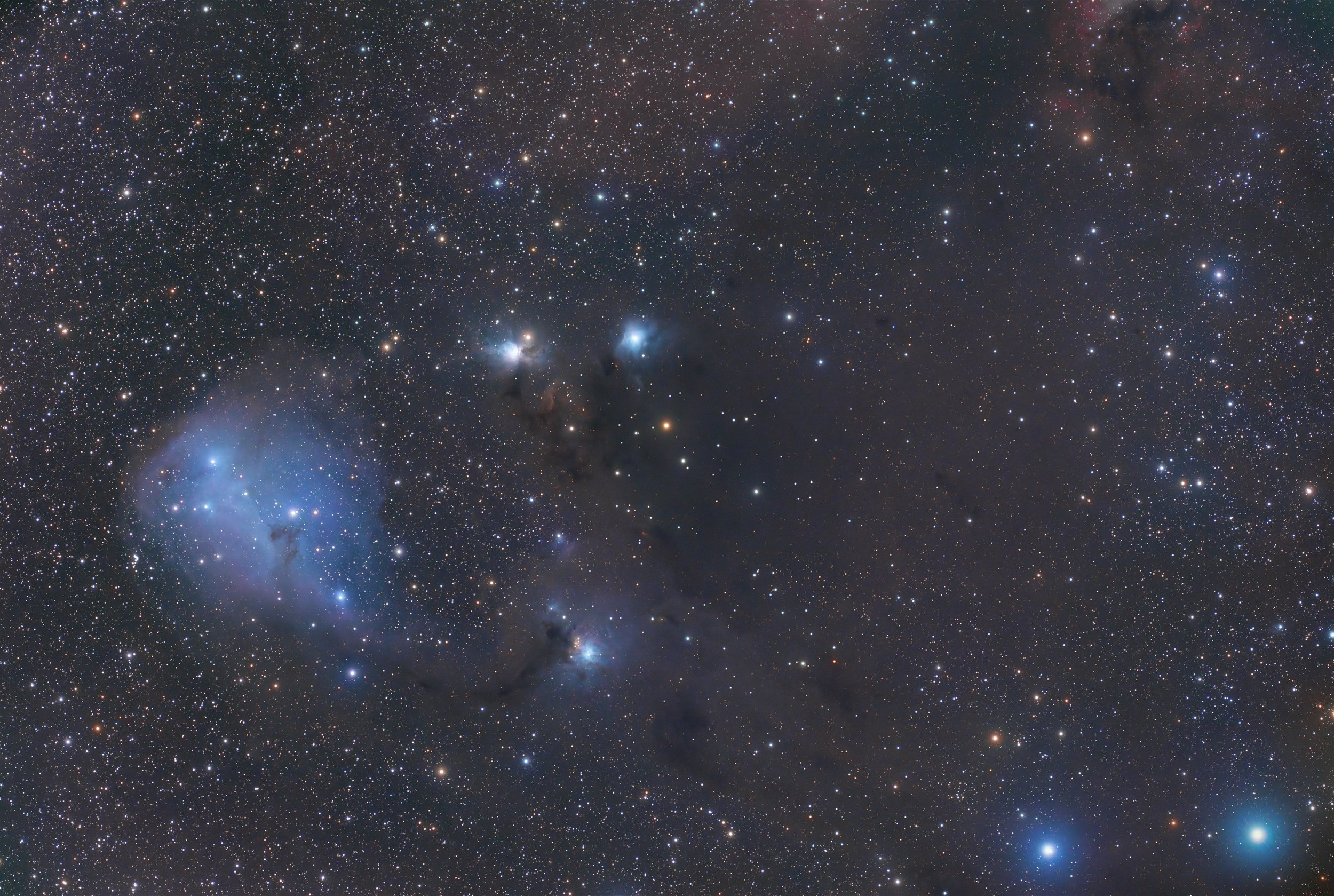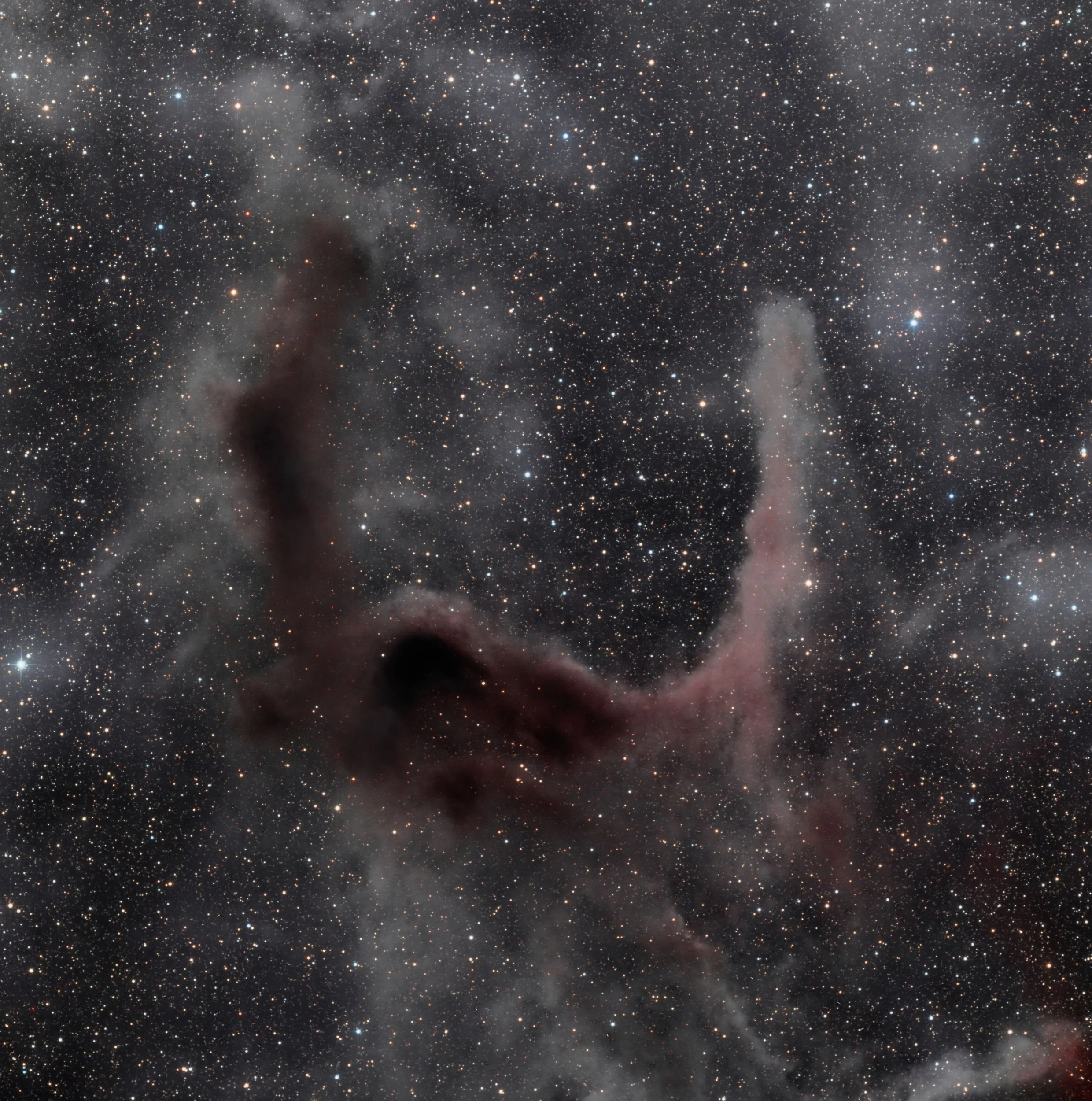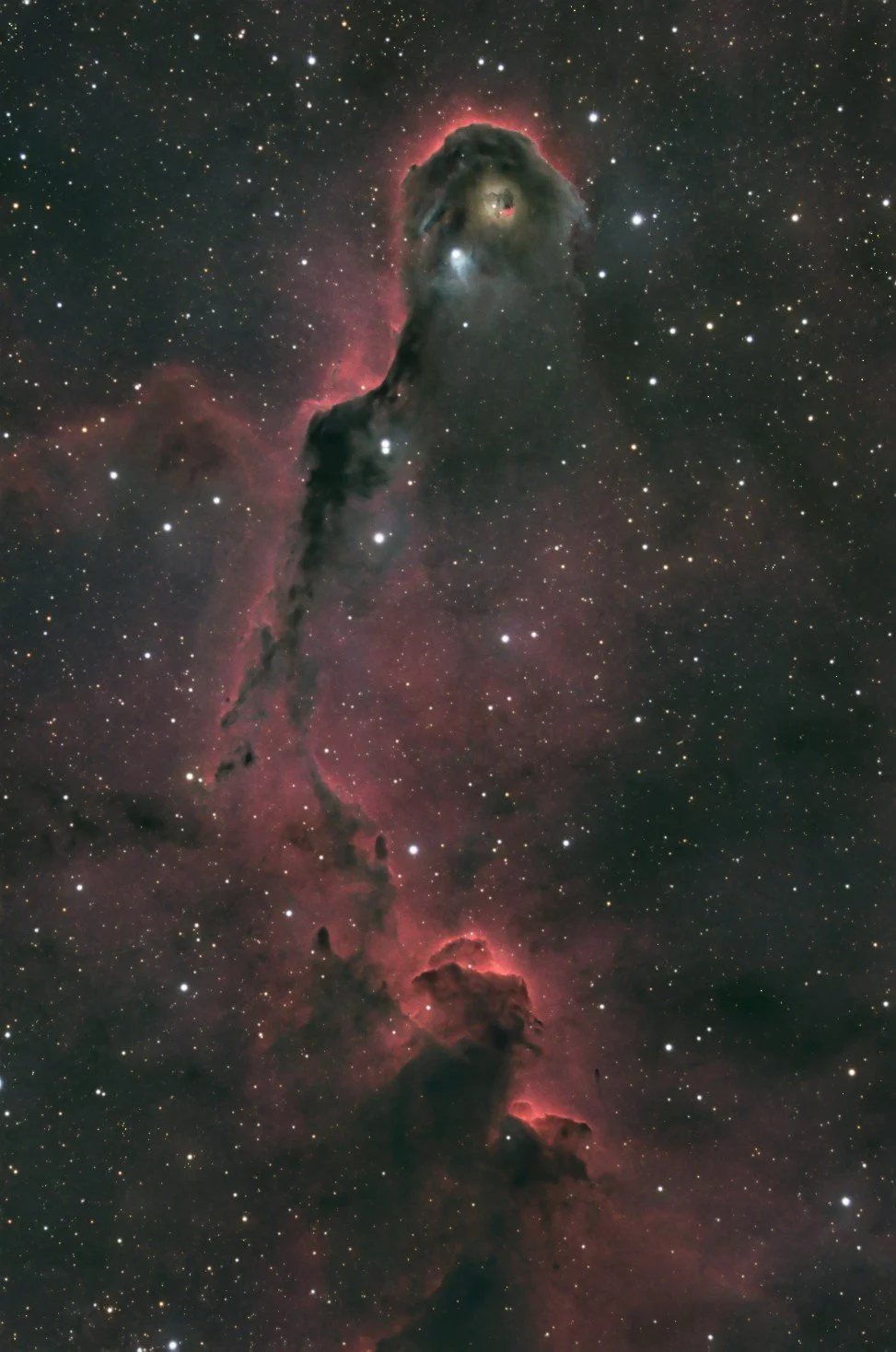
AAPOD2 Image Archives
The Propeller nebula
Image Description and Details : The Propeller nebula is a target that I have tried before in 2019, but this time I wanted to add more Oiii and make it stand out in the final image.
The data captured this year wasn't really enough, so I stacked the new data with everything I had from my previous attempt and I can finally say that I am pleased with the final result.
The equipment used in 2019:
Eq6 Hypertuned mount
Skywatcher 130pds f5 newtonian telescope with Skywatcher x0.9 coma corrector
AstroTech 106LE with upgraded Moonlite focuser and TSFlat 2" field Flattener
Rigel nStep atofocuser
QHY183m Cmos camera, cooled at -20°C
7x1.25" StarlightXpress USB filterwheel
Baader 1.25" 7nm Ha filter
Baader 1.25" 8.5nm Oiii filter
Baader 1.25" 8nm Sii filter
TS65Q as guidescope
QHY5L-IIM guidecam
QHYCCD Polemaster
TS 09 OAG off axis guider
The equipment used in 2023:
Mount: StellarDrive GT6
AstroTech 106LE with upgraded Moonlite focuser
TSFlat 2" field flattener
ASI294MM Pro Cmos camera, cooled at - 15°C
8x1.25" ZWO USB filterwheel
Chroma 1.25" RGB and Chroma 1.25" 3nm SHO filters
Qhyccd QHY5L-IIM guide camera
OpticStar AR90 as guidescope
Qhyccd Polemaster
Software used:
Eqmod, APT, SGP, Stellarium with StellariumScope, PHD2
Location:
2019 - Bushey, Hertfordshire, Bortle 6
2023 - Hemel Hempstead, Hertfordshire, bortle 5
Dates:
18 April to 05 September 2019 and 23 June to 7 July 2023
Frames:
Baader H-alpha 7nm 1.25": 78×300″(6h 30′)
Baader H-alpha 7nm 1.25": 16×600″(2h 40′)
Baader O-III 8.5nm 1.25": 29×600″(4h 50′)
Baader S-II 8nm 1.25": 30×600″(5h)
Chroma Blue 1.25": 10×60″(10′)
Chroma Green 1.25": 10×60″(10′)
Chroma H-alpha 3nm Bandpass 1.25": 50×300″(4h 10′)
Chroma OIII 3nm Bandpass 1.25": 50×600″(8h 20′)
Chroma Red 1.25": 10×60″(10′)
Chroma SII 3nm Bandpass 1.25": 50×300″(4h 10′)
Total integration time: 36h 10′
The stacking, calibration and blending was done in AstroPixel Processor and the post processing in Pixinsight (with help from Star Xterminator and Noise Xterminator and Blur Xterminator) and Photoshop CC 2023
Copyright: Emil Andronic
B143
Image Description and Details : This is 24h 55m of LRGB data on Barnard 143, a dark nebulae in Aquila.
Equipment:
FLI ML16803
Planewave CDK14
Astro-Physics 1600GTO
Astrodon LRGB filters
Hosted at Sierra Remote Observatories
Image processed by Linda Thomas-Fowler
Equipment owned by Timothy Triche
Copyright: Linda Thomas-Fowler
Bubble nebula
This shot is born from the collaboration with astrophilist friend Mirco Turra , who shot last year with his old Newton 254/1200 double narrow band signal (H-alpha and OIII), to which I added this year the Ionized Sulfur signal (SII) and the RGB stars. I’ve been waiting for a year to build this Hubble palette and we finally did it (I promised her 😅).
The subject of the photograph is the famous Bubble Nebula (classified as NGC 7635, Sharpless 162, or Caldwell 11) in the Cassiopea constellation towards the Cepheus border, discovered in 1787 by William Herschel.
Sky-Watcher 254/1200, f/4.7
Konus 200/1000 @960mm, f/4.8
ZWO Asi294MC Pro @-5 °C
Qhyccd Qhy168c @-5 °C
Optolong L_eNhance filter 30x300"
Svbony SII 7nm filter 31x600"
Svbony UV/IR-cut filter 105x30"
N.I.N.A., DSS, APP, PixInsight, PS
Ferrara (Italy)
Cooyright: Massimo Di Fusco
IC1396
Image Description and Details : Equipment and acquisition details: Celestron c11Starizona 1800mmCelestron OAGSky-watcher EQ8-R ProASI2600mc-proASI174mm mini PrimaLuceLab EAGLE4sOptolong L-eNhance 2": 163×300″(13h 35′)ZWO UV IR CUT 2": 353×120″(11h 46′)Integration: 25hr 21'Bortle 4 (SQM: 21.09) NINA PHD2PixInsight PhotoShop
Copyright: Ralph MacDonald
Summer Milky Way from Monteorsaro
Image Description and Details : The summer Milky Way from Monteorsaro.
The landscape is a classic of the norther Apennines, the Giant: the massif of Mount Cusna, vaguely resembling a lying human figure, and rising over 2000 m above sea level.
Canon EOS 6D with Samyang 14mm closed at f/3.5. 16x80s 6400 ISO tracked with SkyWatcher Starandveturer for landscape. 1 shot of 210s f/5.6 6400 ISO untracked for landscape.
Copyright: Alessandro Carrozzi
Rcw85
RCW 85 in Centaurus
In my opininion an exeptionally beautiful object.
When I started I actually thought I´d do it in Narrowband, in the end I thought the RGB looks better so I added 2 hours of luminance last night.
I only used the starless Ha image as luminance on the rays extending from RCW85.
Copyright: Wolfgang
Cosmic dust
mage Details:
Takahashi FS60c
QHY168c
QHY5L-ii
Pegasus Astro SMFC
Feather touch FTF2015BCR-RP
HEQ5
116 · 150s -10ºC, Gain 12
Location: Serra do Cipó, Minas Gerais, Brazil
FAST · PSCS5 · Pixinsight
July 2018
Cosmic dust clouds are draped across a rich field of stars in this broad telescopic panorama near the northern boundary of Corona Australis, the Southern Crown. Less than 500 light-years away the denser clouds effectively block light from more distant background stars in the Milky Way. The entire vista spans about 5 degrees or nearly 45 light-years. Toward the right lies a group of bluish reflection nebulae cataloged as NGC 6726, 6727, 6729 and IC 4812. The dust also obscures from view stars in the region still in the process of formation. Smaller yellowish nebula NGC 6729 surrounds young variable star R Coronae Australis.
Copyright:: Roberto Colombari
The Eagle Nebula in True Color
Image Description and Details : First image using an ASI2600MC with a RASA8! This shows 15 hours on the Messier 16 Eagle Nebula region of the sky in true color, without the use of any filter. This region is most often captured in narrowband, but I like the true color feel for this particular part of the sky. You can see the wings of the eagle spanning in rich hydrogen alpha gas, and the bright stars lighting up the famous Pillars of Creation.
Copyright: Antoine and Dalia Grelin
Dagub cave
Image Description and Details : Dagub Cave
While Socotra is better known for its endemic species of trees and wildlife, there are many limestone caves which dot the island. The largest of these is the Al-Hoq Cave but it is the Dagub cave which offers the more interesting nightscape thanks to its view to the south.
Stalactites, formed over centuries of water dripping from the cliffs, come together at the mouth of the cave to form an interesting foreground against which to frame the night sky. Socotra is very sparsely populated and as a result the skies are very clear whenever the clouds part ways. Being close to the equator, allows one to frame objects otherwise seen only in the Southern Hemisphere. See in the sky here from left to right is the Coalsack Nebula, the Southern Cross, the Running Chicken Nebula, Eta Carina and Gum 15…..
Camera = Sony A7rv
Lens = Sony 12-24 F2.8GM at 15mm
Tracker = Benro Polaris
Sky Exposure = 240secs, F2.8, iso 800, stack of 12, tracked
Ground Exposure = 480secs, F2.8, iso 800, LENR, LLL
Software = Lightroom, Photoshop.
Copyright: vikas chander
B 344
Image Description:
In the center BARNARD 344 a dark nebula in the constellation Cygnus. It is located near the star Sadr in the Gamma Cygni nebula (RA: 20h18m57.4s DEC: +40º 40′ 01″).
Photo made in HOO and RGB stars.
H for Hydrogen and O for Oxygen.
The Sulfur layer is in progress so I will do a SHO version.
SETUP:👇
Skywatcher Quattro 8CF
ZWO ASI533MM Pro
iOptron GEM45
Unit pictures:
Antlia 3nm Narrowband H-alpha 1.25": 150×240″(10h) (gain: 100.00) f/3.8 -10°C bin 1×1
Antlia 3nm Narrowband Oxygen III 1.25": 70×240″(4h 40′) (gain: 100.00) f/3.8 -10°C bin 1×1
Astronomik Deep-Sky Blue 1.25": 40×30″(20′) (gain: 0.00) f/3.8 -10°C bin 1×1
Astronomik Deep-Sky Green 1.25": 40×30″(20′) (gain: 0.00) f/3.8 -10°C bin 1×1
Astronomik Deep-Sky Red 1.25": 40×30″(20′) (gain: 0.00) f/3.8 -10°C bin 1×1
Integration:
Copyright: Puig Nicolas
Night Flight Reflection Nebula 5367
Image Description and Details : This beautiful reflection nebula NGC 5367 is associated with the cometary globule CG12 in Centaurus, about 2500 light years away and is lit up by double star H4636.
Taken from my back yard , LRGB image 21 hours integration time.
William Optics Fluorostar 132 , ZWO ASI2600MM , 10-Micron GM2000 HPSII combi mount. Processed in Astropixel Processor and Pixinsight.
Copyright: Michelle Bennett
NGC 4601- Reflection Nebula in Scorpius
Image Description: IC 4601 is a reflection nebula which is located about 420 light-years away in Scorpius.
The bluish reflection nebula with the two embedded double stars is IC 4601 (vdB 102,vdB 103), the yellowish reflection nebula is vdB 101. The two reflection nebulae appear so different due to the temperature differences of the illuminating stars.
These types of nebulae are called “reflection,” because they reflect the light of nearby stars.
IC 4601 is illuminated by the intense radiation of the stars present in its vicinity, among which the most brilliant star HD 147010, and the two stars of a binary system known as HD 147013, which are all blue giants.
The dust of IC 4601 contains the heavy elements that planets are made of and plays a major role in the creation of new stars. There probably are baby stars wrapped in these blankets of dust.
Taken with CDK 24 from El Sauce Chile
Data: SWOS group Mazlin,Parker,Forman,Hanson
Image Processing: Mark Hanson
Copyright: Mark Hanson
Saturn
Saturn 30 June 2023
Under good seeing conditions and transparency.
The transit of Dione and Rhea over the globe can be seen.
Setup: C14 Edge HD, Fornax52 mount, QHY5III200M, OPTOLONG RGB filters,Barlow FFC Baader, ADC Pietro Astro MK3
Dia.:18.0 arcsec
h:38°
Ls:158°
Agerola-Amalfitan Coast-Italy
Copyright: Luigi Morrone
Rho Ophiuchi cloud complex
Image Description and Details : In order to image the Rho Ophiuchi cloud complex, we decided to create a two-panel mosaic, so as to have a good resolution and be able to walk around the image.
The Rho Ophiuchi cloud complex is a complex of interstellar clouds with mainly dark nebulae.
At a distance of around 450 light-years, it is one of the solar system's closest star nurseries.
Rho Ophiuchi is the star system in the blue area on the left of the image. With a surface temperature of over 6,500K (making them more than 160 times brighter than the Sun), these stars reflect their light onto the dark clouds around them.
Some structures appear to be the result of a shockwave passing through the cloud from the direction of the nearby Scorpius-Centaurus association.
Dust and gas that makes the star system appear 1.45 magnitudes dimmer than it really is. Without the interstellar extinction, Rho Ophiuchi would shine at magnitude 3.18.
We can also find two globular clusters: M4 (the largest) and NGC 6144 (the smallest).
This area of the sky is known for its wide range of colors, making it a very photogenic zone.
Copyright: Team Atlaskies
Elephant's Trunk Nebula
Image Description and Details : The Elephant's Trunk Nebula is a concentration of interstellar gas and dust within the much larger ionized gas region IC 1396 located in the constellation Cepheus about 2400 light years away from Earth. The piece of the nebula shown here is the dark dense globule IC 1396A; it is commonly called the Elephant's Trunk nebula because of its appearance at visible light wavelengths, where there is a dark patch with a bright, sinuous rim. The bright rim is the surface of the dense cloud that is being illuminated and ionized by a very bright massive star (HD 206267) that is just to the east of IC 1396A.
The Elephant's Trunk Nebula is now thought to be a site of star formation, containing several very young (less than 100000 years) stars that were discovered in infrared images in 2003. Two older stars are present in a small, circular cavity in the head of the globule. Winds from these young stars may have emptied the cavity.
The combined action of the light from the massive star ionizing and compressing the rim of the cloud, and the wind from the young stars shifting gas from the center outward lead to very high compression in the Elephant's Trunk Nebula. This pressure has triggered the current generation of protostars.
Konus 200/1000 @960mm, f/4.8
Qhy168c @-5 °C
Sky-Watcher Eq6r Pro mount
Optolong L_Ultimate filter 45x600"
SvBony SII 7nm filter 45x600"
SvBony UV/IR-cut filter 115x30"
N.I.N.A., DSS, APP, PixInsight, PS
Ferrara (Italy)
Copyright: Massimo Di Fusco
AR3354
Image Description and Details : AR3354 29 June 2023
The huge sunspot AR3354 taken under wonderful seeing conditions.
C14 Edge HD, Fornax52 mount, Basler1920-155,Barlow Zeiss, Baader Astrosolar ND3.8 Full Aperture solar filter, Baader Continuum 540nm
Agerola-Amalfitan Coast- Italy
Copyright: Luigi Morrone
The Black Eye Galaxy
Image Description and Details : The Black Eye Galaxy, or M64, is located 17 million light-years away in the constellation Coma Berenices. Its nucleus is packed with impressive dust lanes laden with rigorous star formation. Charles Messier added this galaxy to his list in 1780, but it had already been discovered by English astronomer Edward Pigott in 1779.
Acquisition Date: April 24 - May 10, 2023
Equipment: Planewave CDK12.5, Astrodon LRGB, ZWO ASI2600MM
Integration: 25 hours
- L: 119 x 300s
- R: 58 x 300s
- G: 64 x 300s
- B: 65 x 300s
Processed in PixInsight
Copyright: Carl Crum
SH2-54
Image Description and Details : Sh2-54 with my dual Setup of a TS80 and TS130 as SHO with (partial) RGB Stars from the TS130.
I have double checked all data and the lower left dark nebula is a bit stronger in S-II line.
27:42h total capture time:
Astronomik Deep-Sky Blue 36 mm: 33×180″(1h 39′)
Astronomik Deep-Sky Green 36 mm: 25×180″(1h 15′)
Astronomik Deep-Sky Red 36 mm: 26×180″(1h 18′)
Astronomik H-alpha CCD 6nm 36mm: 43×300″(3h 35′)
Astronomik OIII CCD 6nm 36 mm: 30×300″(2h 30′)
Astronomik SII CCD 6nm 36 mm: 33×300″(2h 45′)
ZWO H-alpha 7nm 36mm: 62×300″(5h 10′)
ZWO O-III 7nm 36mm: 55×300″(4h 35′)
ZWO S-II 7nm 36 mm: 59×300″(4h 55′)
Copyright: Philip Mair





















